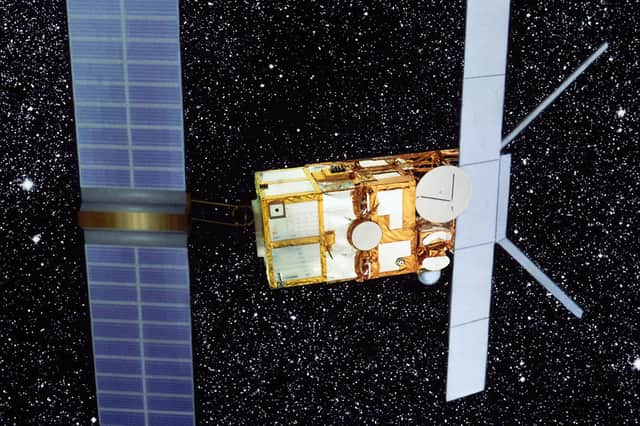ERS-2: Satellite is due to fall to earth today - where will it land?


A satellite is due to fall to earth today after almost 30 years in space.
European Remote Sensing satellite ERS-2 due to descend to Earth on Wednesday, February 21. The ERS-2 was launched in 1995, following on from its sister satellite, ERS-1, which had been launched four years earlier.
Advertisement
Hide AdAdvertisement
Hide AdAt their time of launch by The European Space Agency, two ERS satellites were the most sophisticated Earth observation satellites ever developed. In 2011, the ESA retired ERS-2 and began the process of deorbiting.
After 13 years of orbital decay, mainly driven by solar activity, the satellite will naturally re-enter Earth’s atmosphere. During re-entry, the satellite will break up into pieces. Most of the ERS-2 will burn up on re-entry, but the ESA is still monitoring its landfall, which is predicted to occur somewhere over the east coast of central Africa.
Any pieces that survive making landfall will be spread out over a ground track on average hundreds of kilometres long and a few tens of kilometres wide, so the associated risks are deemed very low.
According to data acquired on February 20, the ESA’s Space Debris Office predicts the ERS-2 satellite re-entry will occur around 3.32pm GMT.
Advertisement
Hide AdAdvertisement
Hide AdBut the EAS has said: "The interplay between unpredictable atmospheric conditions and other factors such as which direction the satellite is facing (which increases or decreases the surface area exposed to the atmosphere) and the fact that we can only update our predictions after it passes over a sensor – like a telescope or radar – makes predicting a natural re-entry very difficult."
The ESA’s Space Debris Office did warn their prediction may be out by roughly four and a half hours before or after that time thanks to the influence of unpredictable solar activity, which affects the density of Earth’s atmosphere and, therefore, the drag experienced by the satellite.
Throughout its 16-year working life, the ERS-2 returned a wealth of information that revolutionised our perspective of Earth and understanding of climate change. It collected data on Earth’s diminishing polar ice, changing land surfaces, rising sea levels, warming oceans, and atmospheric chemistry. In addition, the ERS-2 was called upon to monitor natural disasters, such as severe floods and earthquakes, in remote parts of the world.
The University of Warwick's Dr James Blake, a research fellow at the Centre for Space Domain Awareness, said: “There are now thousands of active and defunct satellites orbiting the Earth and ERS-2 is the latest to undertake the return leg of its journey as it re-enters the Earth’s atmosphere. This is a fate that awaits uncontrolled satellites and debris that can no longer counteract the drag forces exerted by the Earth’s atmosphere – indeed, operators are encouraged to speed up the re-entry of their defunct satellites to keep space clear for future missions.
Advertisement
Hide AdAdvertisement
Hide Ad“Atmospheric drag is highly influenced by solar activity – ‘weather’ from the Sun that affects conditions in the near-Earth environment, where the satellites orbit. This is still very unpredictable, and so it’s a huge challenge to predict when and where a satellite will re-enter. Imagery from other satellites in space – such as those from HEO here – can supplement observations taken with ground-based sensors to help paint a clearer picture, and it’s exciting to see this technology advance.”
Comment Guidelines
National World encourages reader discussion on our stories. User feedback, insights and back-and-forth exchanges add a rich layer of context to reporting. Please review our Community Guidelines before commenting.